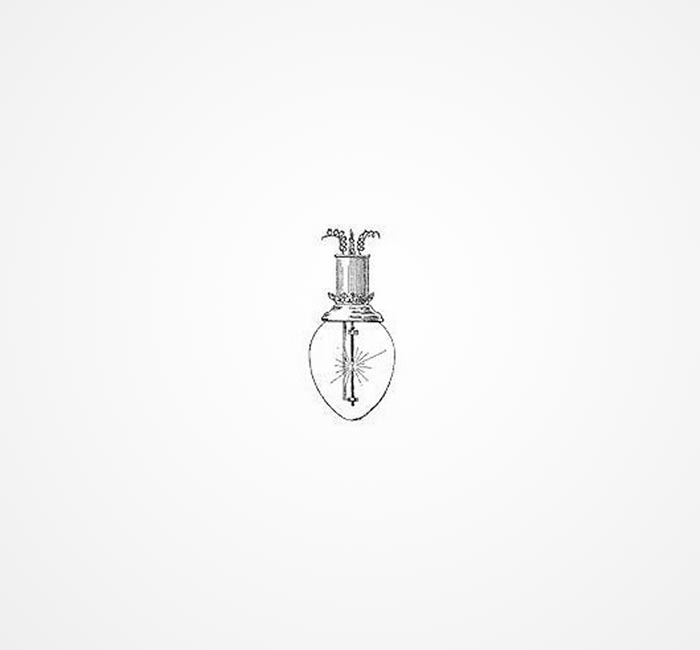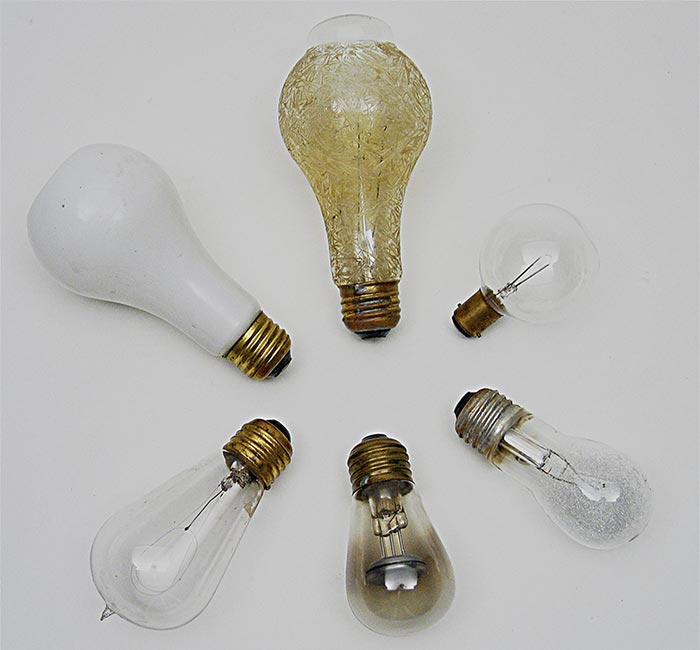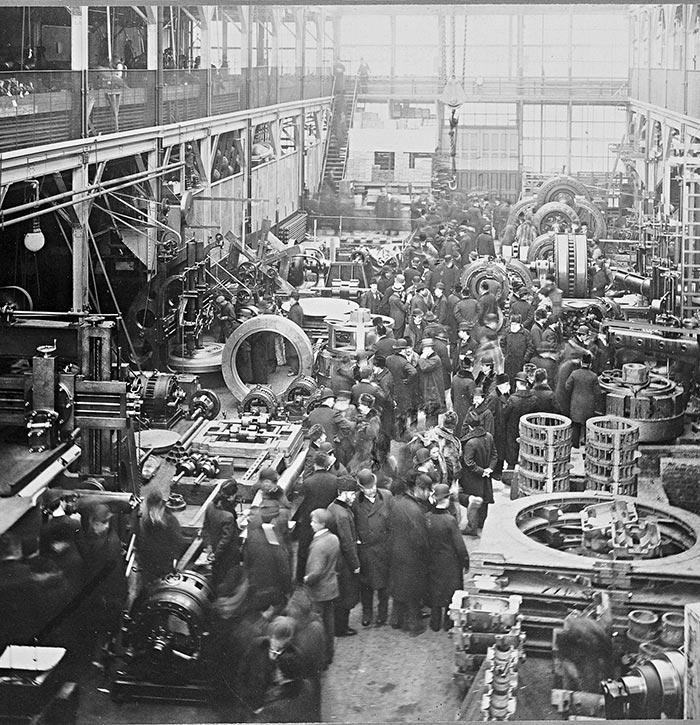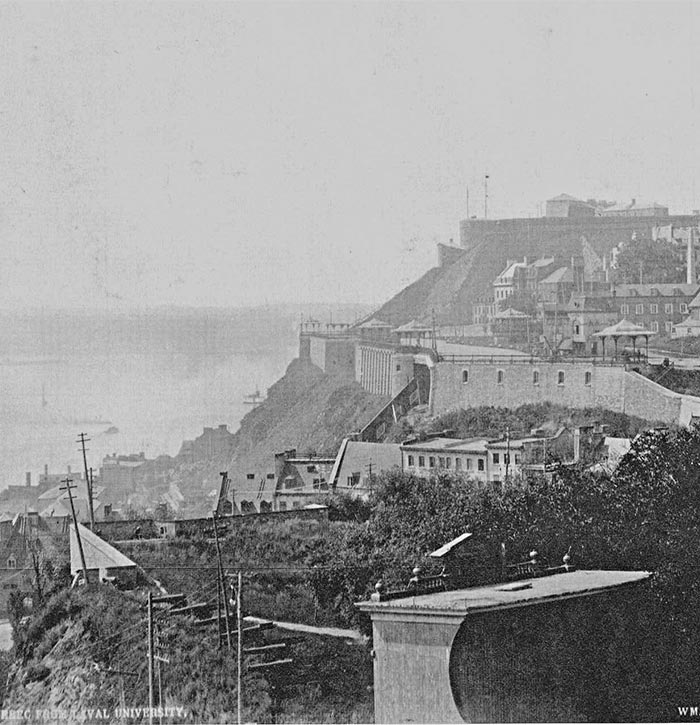1878-1897 – The Early Years
The Paris World Fair of 1878 showed the world a new way of creating light: with electricity. In Québec and around the world, fierce competition between gas and electric lighting took off immediately. Fledgling electric utilities vied with one another for street lighting contracts in an effort to establish a profitable distribution system as quickly as possible. Among the hundreds of companies that sprang up, only a few survived, and these formed powerful local monopolies. In Montréal, the Montreal Light, Heat and Power Company eliminated all its competitors, while elsewhere in Québec, the Shawinigan Water and Power Company laid the cornerstone of a vast industrial complex by harnessing the Rivière Saint-Maurice. Abundant water resources made hydropower a logical choice, and this choice had a decisive effect on industrialization in Québec and on the use of its timber and mineral resources.
1878-1879
The arc lamp, highlight of the Paris World Fair
At the World Fair in Paris, the world discovered a new way of creating light: electric lighting. Wonderstruck visitors strolling along the Avenue de l'Opéra saw the first "electric candle": an arc lamp invented by Pavel Jablochkov, a Russian engineer living in Paris. Montrealer J.-A.-I. Craig. witnessed the event. He was fascinated by this method of lighting, "100 times more powerful" than gaslight. He returned to Montréal, and with the help of Jesuit friends, carried out an initial trial of the arc lamp on the roof of Collège Sainte-Marie at Bleury and Dorchester (today René-Lévesque Blvd.). Only a few passers-by were present at this initial "illumination" of the Montréal skyline.
Public demonstration of the arc lamp in Montréal
On May 16, Craig conducted a public demonstration of the arc lamp in Montréal, this time at the Champ-de-Mars, the military parade ground. According to the following day's edition of the newspaper La Minerve, several thousand spectators expressed their satisfaction. The most enthusiastic described the lamp as a "midnight sun", and others spoke of it as an invention that would revolutionize their way of life.
Revolution in lighting
On October 21, in his laboratory in Menlo Park, New Jersey, Thomas Alva Edison. perfected the incandescent light bulb. He then conceived of a power generating station and a distribution system to which customers would be connected. In so doing, Edison initiated the amazing development of the electricity industry worldwide. Enthusiasm for electric power continued to grow as a variety of new and unanticipated applications were found in industry and business, as well as in many facets of daily life.
Slide show
The following slide show contains images from the years 1878-1879
1884-1885
Electricity supplants gas
With the support and collaboration of Senator J. Rosaire Thibodeau and Montréal financier and broker Rodolphe Forget, the Royal Electric Company, an American firm, established the foundations of its empire in Montréal. Against a background of intrigue and questionable maneuvers, the company succeeded in replacing gas with electricity for street lighting. By 1889, electric street lights could be found all over the city. Royal Electric became a monopoly and engaged in practices that soon made it very prosperous, but also hated by the public.
Lighting of Dufferin Terrace in the city of Québec
The competition between gas and electric street lighting was as fierce in other parts of the province as in Montréal. On September 30, the Quebec & Levis Electric Light Company pulled off an impressive publicity coup by lighting Dufferin Terrace in Québec with 34 arc lamps, to the amazement of the numerous dignitaries and hundreds of spectators assembled for the event. The lamps were powered from Montmorency Falls generating station over a line some 30 kilometres long—a feat never before achieved in North America.
Slide show
The following slide show contains images from the years 1884-1885
1892
The first electric streetcars in Montréal
Horse-drawn streetcars had existed in Montréal since 1861; now they were replaced by the first electric-powered streetcars. Other cities in Québec also adopted this method of public transit: Québec, Trois-Rivières and Sherbrooke. The most famous of the "horseless trams" was, without a doubt, the one that for years carried thousands of devout pilgrims from Québec's capital to the shrine at Sainte-Anne-de-Beaupré.
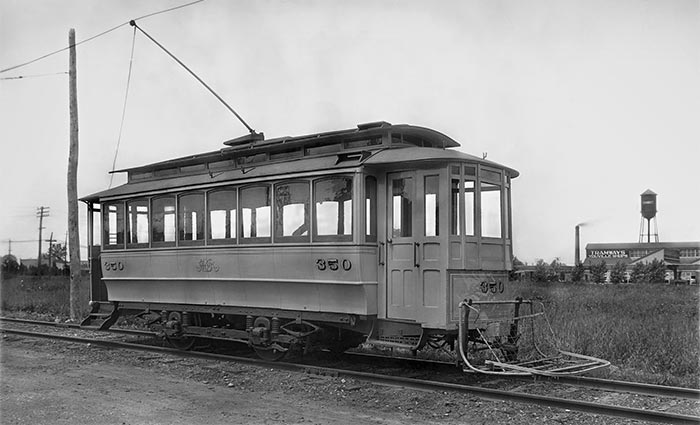
Montreal Street Railway Company electric streetcar, around 1892. Electric streetcars first appeared in Montréal around 1890, in the cities of Québec and Sherbrooke in 1897, in Lévis in 1902 and in Trois-Rivières in 1915. With the advent of this mode of transportation, people started working farther and farther from home.
Source: Hydro-Québec archives

